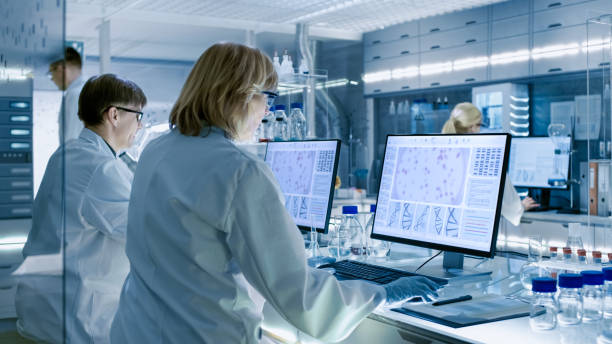BROMOCHLOROMETHANE

Bromodichloromethane is formed as a byproduct when chlorine chemicals are added to drinking water to kill bacteria. Safe Home offers a few kits that provide drinking water testing for bromochloromethane in water supplies.
Parameter Type: Drinking Water Testing for Volatiles
Parameter Name: Bromochloromethane
What it is and Where it Comes From:
Bromochloromethane is a clear colorless liquid with a sweet chloroform-like odor. Denser than water and insoluble in water. Liquid bromochloromethane will attack some forms of plastics, rubber, and coatings. It was invented for use in fire extinguishers by the Germans during the mid-1940s, in an attempt to create a less-toxic, more effective alternative to carbon tetrachloride. This was a concern in aircraft and tanks as carbon tetrachloride produced highly toxic by-products when discharged onto a fire. Drinking water testing gives you several benefits like peace of mind, identifying contaminants in your water, and insight into health concerns. Safe Home offers Laboratory drinking water testing kits for bromochloromethane, allowing you to collect your water sample and ship it directly to our EPA-Certified Laboratory. This platform of drinking water testing for bromochloromethane will give you an accurate level based on the lowest level of a parameter our instruments can detect (Method Detection Level). Safe Home drinking water testing for volatiles can be used for city and well water supplies. Drinking water testing should be done any time you notice a significant change in your water quality.
Health Effects:
Symptoms of exposure include disorientation, dizziness, irritation of the skin, and throat, pulmonary edema, headache, anorexia, nausea, vomiting, abdominal pain, weight loss, memory impairment, paralysis, weakness, tremors, convulsions, and CNS depression.
Solutions to Contaminant Levels:
What are the next steps after drinking water testing? You can get rid of the bromochloromethane from drinking water with Reverse Osmosis (RO) and activated carbon. Reverse osmosis is a process that removes foreign contaminants, solid substances, large molecules, and minerals from water by using pressure to push it through specialized membranes. Here’s how reverse osmosis works. Unlike osmosis, which is a passive process, reverse osmosis requires external force (pressure) to work. Pressure is applied to a highly concentrated solute solution, such as salt water, to pass through a membrane to a lower concentrate solution. The membrane allows water to flow through but blocks out larger molecules, like contaminants. The reverse osmosis process leaves higher concentrations of solute on one side and only the solvent, or freshwater, on the other. Carbon filtering is a method of filtering that uses a bed of activated carbon to remove impurities from a fluid using adsorption. Carbon filtering works by adsorption, in which pollutants in the fluid to be treated are trapped inside the pore structure of a carbon substrate. The substrate is made of many carbon granules, each of which is itself highly porous. As a result, the substrate has a large surface area within which contaminants can be trapped. Activated carbon is typically used in filters, as it has been treated to have a much higher surface area than non-treated carbon. Drinking water testing should be done once at least once a year to monitor contaminants in water supplies. Who do I need to contact to find out more information about water quality in my area? Every community water supplier must provide an annual report to its customers, known as a Consumer Confidence Report (CCR). The report provides information on your local drinking water quality, including the water’s source, contaminants found in the water, and how consumers can get involved in protecting drinking water. How often does the local public water system preform drinking water testing? Frequency of drinking water testing depends on the number of people served, the type of water source, and types of contaminants. Certain contaminants are tested more frequently than others, as established by the Safe Drinking Water Act. You can find out about levels of regulated contaminants in your treated water for the previous calendar year in your annual Consumer Confidence Report (CCR).


